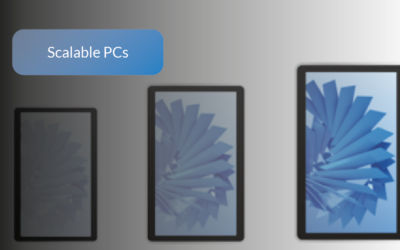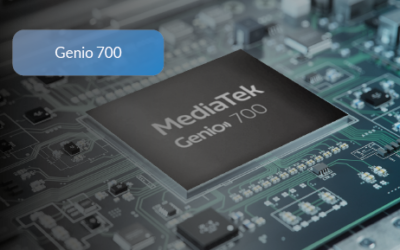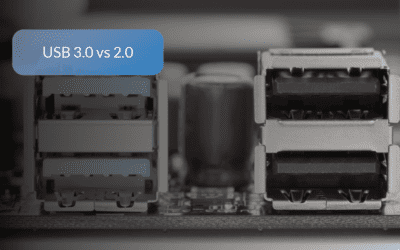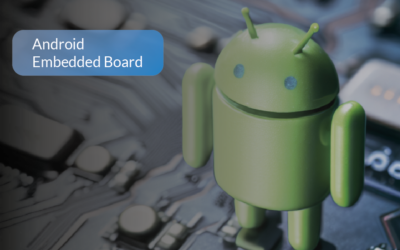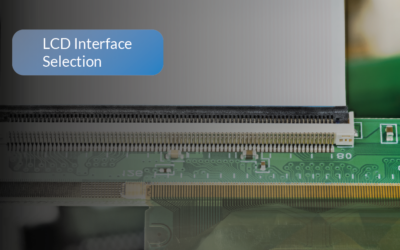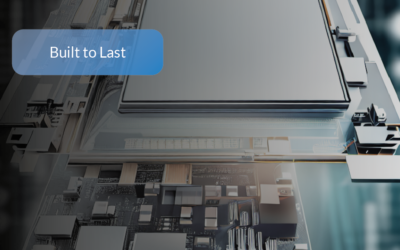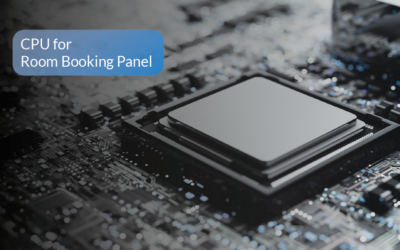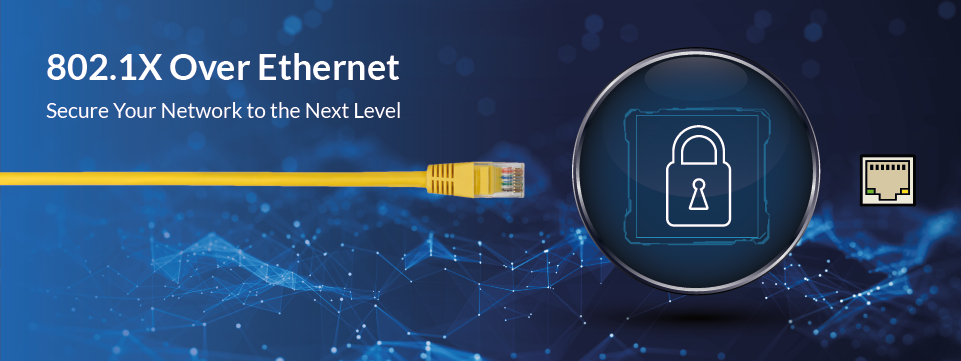
802.1X over Ethernet: A Key Solution for a More Secure Network
Introduction to 802.1X over Ethernet
In an era where network security is paramount across various industries, understanding and implementing robust security measures is essential. Last time, we delved into the world of 802.1X, exploring how it serves as a robust solution for securing wireless networks (read our guide on 802.1X here). While 802.1X plays a crucial role in wireless security, it doesn’t stop there. For those seeking to enhance protection even further, 802.1X over Ethernet emerges as another vital option. By extending the benefits of 802.1X to wired networks, this technology offers a comprehensive solution that meets the ever-evolving demands of network security. In this article, we will uncover the unique features and benefits of 802.1X over Ethernet, demonstrating how it can be a key component in your network security strategy.
Understanding 802.1X and Its Application over Ethernet
- Explanation of the 802.1X Standard: 802.1X is an IEEE standard that provides authentication to devices in a LAN environment, applicable to both wired and wireless networks.
- Differentiation Between Wireless and Wired:
- Wireless Networks: 802.1X is commonly used to secure wireless connections, providing robust authentication mechanisms.
- Wired Networks: 802.1X over Ethernet offers additional protection. The physical connection in wired networks ensures a higher level of security, as it significantly reduces the risk of sniffing, a common threat in wireless networks. By requiring authentication even over physical connections, 802.1X over Ethernet creates an extra layer of defense against unauthorized access.
- Real-World Applications: Various organizations from government to finance have leveraged 802.1X over Ethernet to safeguard sensitive data and comply with regulatory standards.
How 802.1X Works with Ethernet: A Security Perspective
- Introduction to Ethernet and Its Layers: Ethernet is a widely used technology for linking computers in a local network. It operates at both Layer 1 (physical layer) and Layer 2 (data link layer) of the OSI model (a reference model for how applications communicate over a network).
- Comparison Between Layer 2 and Layer 3 in 802.1X over Ethernet:
- Explanation of Layer 2 vs. Layer 3: Layer 2 deals with data link functions, while Layer 3 handles routing. Both interact with 802.1X over Ethernet to control access.
- How These Layers Interact with 802.1X over Ethernet: 802.1X works at Layer 2, controlling access, while Layer 3 ensures proper routing of authenticated traffic.
- Explanation of the Security Protocol for Ethernet: 802.1X over Ethernet provides port-based network access control, allowing or denying access based on authentication.
- Implementation of 802.1X over Ethernet: By integrating 802.1X authentication with Ethernet, networks can ensure that only authenticated devices connect, enhancing overall security.
- Overview of 802.1X Layers: 802.1X operates at Layer 2 of the OSI model, controlling port-based access. It is superior to MAC Address Authentication, which can be spoofed, and enables the use of EAPOL (Extensible Authentication Protocol Over LANs).
- Operation of 802.1X: User or device credentials are encapsulated within an EAPOL packet, transmitted onto the network before reaching the authenticator. The device running the 802.1X supplicant and the network port secured by 802.1X is referred to as Port Access Entity (PAE).
- Preventing Unauthorized Network Access: The primary purpose of 802.1X is to control port access and prevent unauthorized users from using the network. It’s a valuable tool in preventing electronic crime, stopping unknown users, and even quarantining compromised computers.
LV-Tron’s Unique Implementation of 802.1X over Ethernet
- LV-Tron’s “802.1X over Ethernet” Feature on Android: LV-Tron has developed a unique approach to implementing 802.1X over Ethernet, offering advanced security features specifically on the Android system. By integrating 802.1X over Ethernet with Android, LV-Tron takes advantage of the platform’s cost-efficiency and stable performance while enhancing its security. This combination is rare in the industry and reflects LV-Tron’s commitment to innovation and excellence.
- Enhanced Security: LV-Tron’s solution brings an unparalleled level of protection to wired networks, leveraging the benefits of both Android and 802.1X over Ethernet.
- Tailored Configuration: LV-Tron’s experts work closely with clients to customize the implementation according to specific needs, ensuring a seamless integration with existing network architectures.
- Support for Simple Certificate Enrollment Protocol (SCEP): In addition to 802.1X over Ethernet, LV-Tron’s solution also includes support for SCEP, a protocol that enables secure handling of digital certificate management. This addition further strengthens the overall security posture, making it an attractive option for various applications and industries.
Conclusion: The Future of 802.1X over Ethernet
“802.1X over Ethernet” serves as a key solution for a more secure network, and LV-Tron’s unique approach puts organizations at the forefront of this technological advancement. By leveraging the strengths of Android’s system and enhancing it with features like 802.1X over Ethernet and SCEP, LV-Tron offers a comprehensive and tailored solution that can bolster network security, ensuring a safer environment.
Ready to explore the power of LV-Tron’s 802.1X over Ethernet solutions? Check out with innovative solutions today and take the next step towards a more secure and intelligent future. Request a free consultation or download our comprehensive guide to 802.1X over Ethernet now!
Transform Your Operations with Scalable Panel PCs
Transform Your Operations with Scalable Panel PCs Industrial PCs have become a cornerstone of modern industrial operations, offering robust and reliable solutions for a variety of applications. However, as industries evolve and requirements become more complex, the...
Driving IoT Innovation with LV-Tron and MediaTek Genio 700 (MT8390)
Driving IoT Innovation with LV-Tron and MediaTek Genio 700 (MT8390) As we continue to embrace the digital age, the Internet of Things (IoT) has become a significant part of our daily lives, with an estimated number of connected devices projected to exceed 75 billion...
The Benefits of Purpose-Built Visitor Management System Kiosks
The Benefits of Purpose-Built Visitor Management System Kiosks Visitor Management System Kiosks are self-service kiosks that allow visitors to check-in, register, and obtain a badge for entry into a facility. In recent years, the need for enhanced security and safety...
RJ45 vs RJ11: Decoding the Mystery of the Fast Connections
RJ45 vs RJ11: Decoding the Mystery of the Fast Connections In our interconnected universe, sluggish network speeds cause frustration and anxiety. Understanding RJ45 and RJ11 connectors is essential for networking and telecom applications. Making a common...
Wi-Fi 6 vs Wi-Fi 5: In-Depth Analysis for Industrial PC Applications
Wi-Fi 6 vs Wi-Fi 5: In-Depth Analysis for Industrial PC Applications With increasing demands for IoT (Internet of Things) devices and industrial PCs, selecting an ideal wireless standard for connectivity becomes more of a critical decision than ever. Here, we present...
USB 3.0 vs 2.0: Which One to Use for Industrial Applications?
USB 3.0 vs 2.0: Which One is Best for Optimized Performance and Cost-Effectiveness? Finding a balance between performance and cost when selecting USB 3.0 and 2.0 for industrial projects is essential. Since its debut in 1996, USB technology has advanced greatly; more...
Selecting the Best Smart Signboard for Capturing Maximum Attention
Discover the essential factors to consider when selecting the perfect smart signboard for your business or project. Learn how to capture maximum attention with the right combination of purpose, size, display quality, connectivity, compatibility, durability, and maintenance. Follow our comprehensive guide to make an informed decision and achieve success with your smart signboard investment.
The Most Flexible and Scalable Android Embedded Board for Your Projects
Choosing the right Android embedded board is crucial for the success of your IoT project. With so many options available, it can be overwhelming to determine which board is best suited for your project. LV-Tron’s Android embedded board options offer a range of advantages, including cost and performance considerations, scalability and flexibility, quick development time, and exclusive features such as hardened Android operating systems and remote device management apps. With LV-Tron’s expertise in the latest technologies and industry trends, you can be confident that our Android embedded board options will meet your project requirements
Choosing the Right Industrial PC Power Supply: Embedded, External, or PoE?
Choosing the Right Industrial PC Power Supply: Embedded, External, or PoE When it comes to powering industrial PCs, three primary options exist embedded power supplies, external power supplies and Power over Ethernet (PoE). Embedded power supplies are built into the...
MIPI, eDP and LVDS: How to choose the right LCD Interfaces for Industrial PCs
Selecting the appropriate display interface technology is crucial for industrial PCs to ensure optimal functionality and high-quality display performance. In this article, we will discuss the features and benefits of MIPI, eDP, and LVDS technologies, all popular LCD interfaces used in industrial PCs. Understanding the differences between these technologies can help you choose the right one for your specific needs and requirements.
Best LCD Types for IPC: TN, IPS, and VA Compared
LCD displays are the most commonly used display technology in industrial PCs due to their durability, versatility, and cost-effectiveness. In this article, we explore the three main types of LCD displays: TN, IPS, and VA, and their benefits for industrial PC applications. We discuss the strengths and weaknesses of each display type, and provide insights on choosing the right display type for your industrial PC. From considering the specific requirements of your application to assessing the environmental conditions in which your industrial PC will operate, we cover all the essential factors to help you make an informed decision. Whether you’re looking for high image quality for graphic design or need accurate color representation for medical imaging, this article will provide you with the knowledge to select the right display technology for your industrial PC needs.
How LV-Tron’s Industrial-Grade Room Booking Panels are Built for Reliability
LV-Tron’s industrial-grade room booking panels are designed to withstand harsh environments and heavy usage. They are built with high-quality industrial-grade components, secure mounting options, and offer software-level security measures. The panels are fanless, shock/vibration resistant, and undergo rigorous quality testing to meet industrial-grade standards for both hardware and firmware. With these features, LV-Tron’s room booking panels provide a reliable and durable solution for any space.
How High-Brightness LCD Displays Can Benefit Your Self-Service Kiosks
Learn why LCD brightness is crucial for your self-service kiosks. Explore the benefits of high-brightness LCD displays and factors to consider when choosing the optimal brightness level.
Choosing the Right CPU Platform for Your Room Booking Panel: Advice from Industrial PC Experts
Choosing the right CPU platform is crucial for optimal performance of your room booking panel. Learn about NXP, MediaTek, and Rockchip CPU options, their benefits and things to consider, and factors to keep in mind when choosing a CPU for your room booking app. LV-Tron, with over 20 years of experience in industrial computers, offers expert guidance and evaluation to help you find the most effective, cost-saving, and future-proof solution for your needs.
Empowering the Future of Smart Workplaces with LV-Tron’s Hardware
LV-Tron’s IoT hardware provides the foundation for the smart workplaces of the future. Learn how meeting room management, on-demand energy consumption, flexible working, and commitment to security can empower your business.

